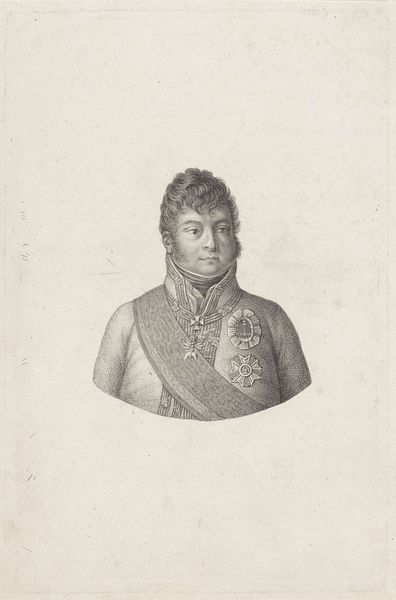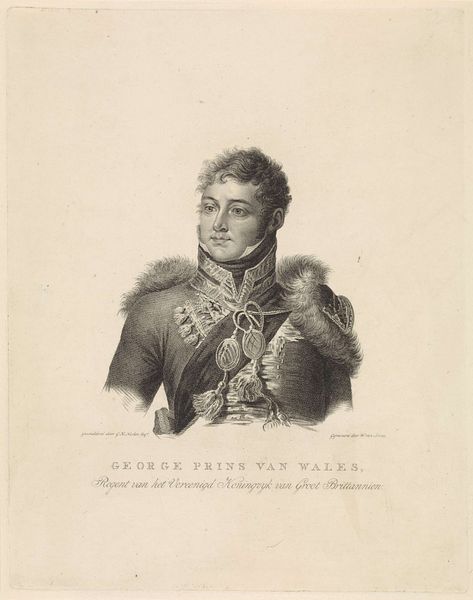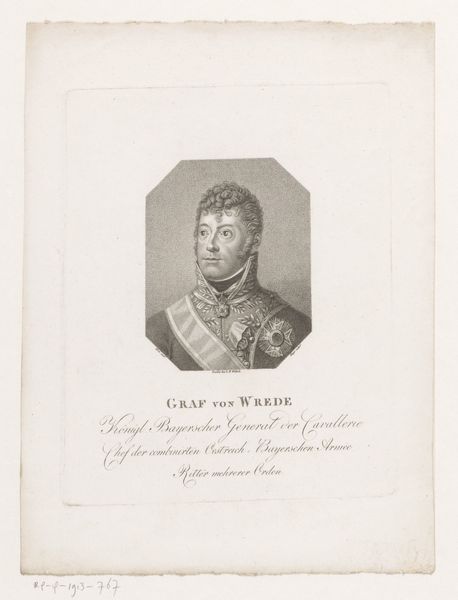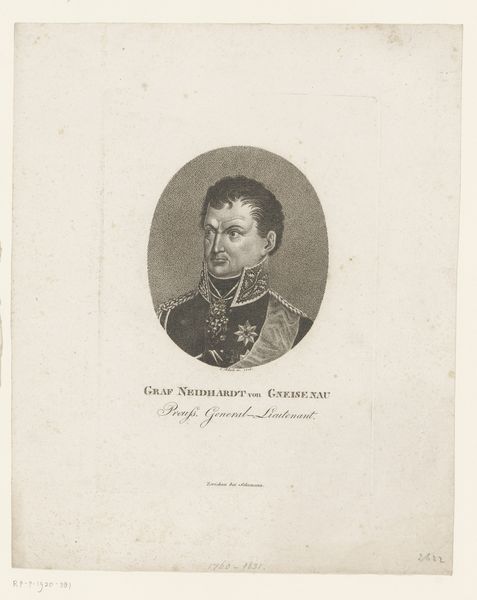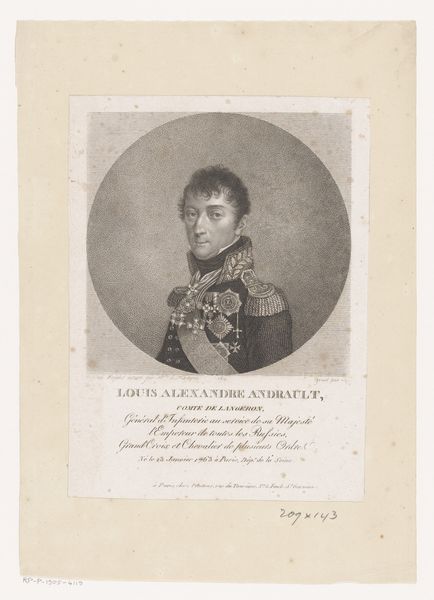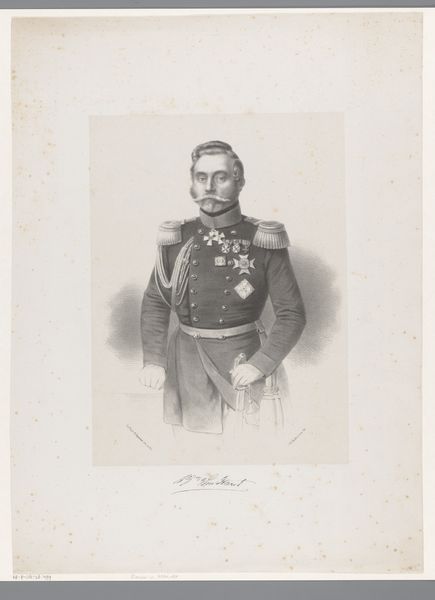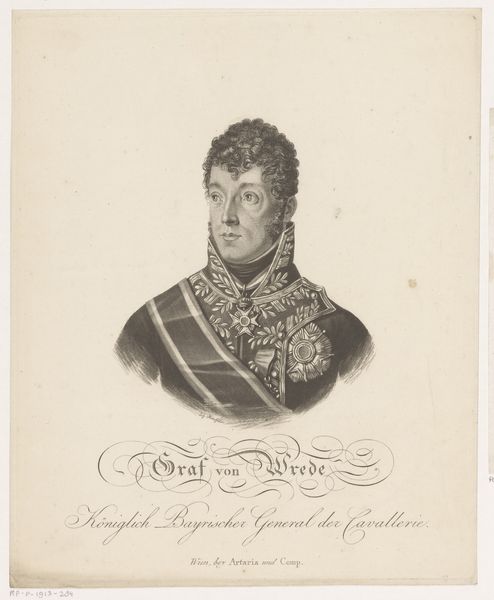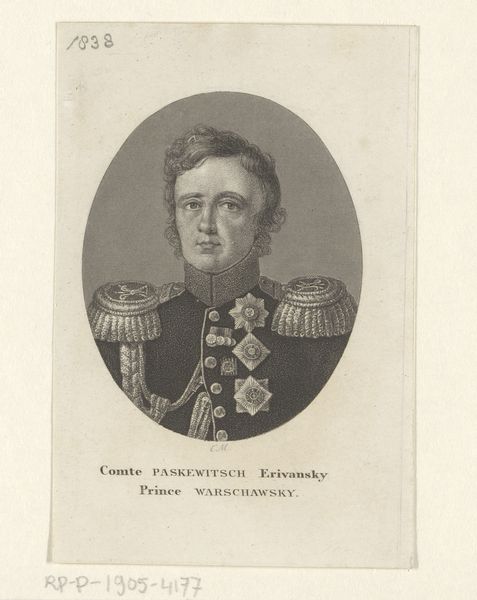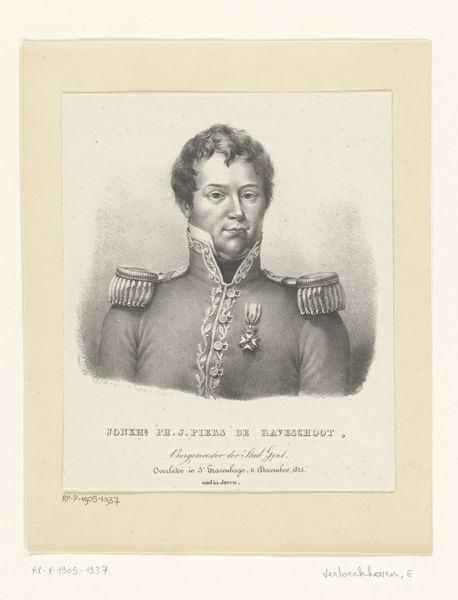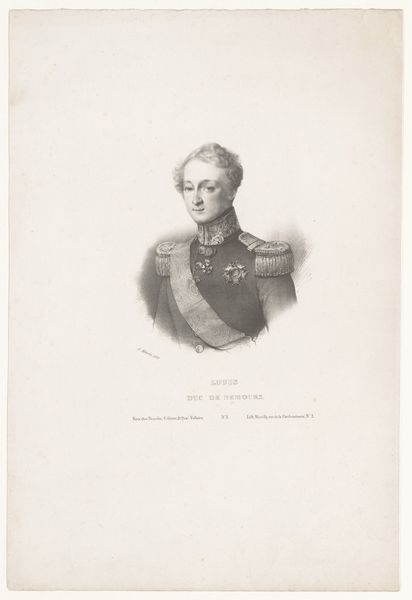
lithograph, print
#
portrait
#
lithograph
# print
#
romanticism
#
realism
Dimensions: height 185 mm, width 113 mm
Copyright: Rijks Museum: Open Domain
Curator: G.W. Lehmann completed this work, entitled "Portret van Carl Philipp von Schwarzenberg," in 1838. It's a lithograph, a type of print. Editor: It’s immediately striking, this portrait. The density of ornamentation contrasts strongly with the figure’s rather bland expression. I find it intriguing – a real tension between the surface and the soul. Curator: Absolutely. The sheer labor involved in creating such detail with lithography is remarkable. Consider the societal context – prints like this democratized portraiture, making it available beyond the aristocracy. Lehmann used a stone, meticulously drawing the image so that multiple impressions could be pulled. Editor: That’s a sharp point. I'm fixated on the symbols: the medals, the sash – clear indicators of power and status in their day. The image offers a rich narrative about Schwarzenberg's role as a military figure; we can consider them semiotic codes for leadership and triumph during a pivotal period. Curator: Lithography was very much a commercial medium as well, used to reproduce images efficiently. Lehmann, the son of a portrait painter himself, found a practical outlet. The materiality here tells a social story: How accessible was this type of image to the average citizen? And what were the production values like relative to others being circulated at that time? Editor: What interests me is the enduring symbolism of the military figure. These adornments still carry meaning. It represents a kind of visual echo of that bygone era. It's impossible to look at the artwork without some sense of a story. Curator: And to consider the reverse? The economics of image-making are no less impactful, whether that be G.W. Lehmann making and selling this portrait, or today, institutions choosing whether and how to reproduce their materials. It affects public access, the perceived importance and ultimate survival of our materials. Editor: It’s true, the layers of meaning compound over time. A portrait is never *just* a portrait, is it? Seeing it again makes me aware that its meanings were shifting right from the start. Curator: Precisely. Each impression pulls material from the original, circulating value alongside it and imbuing it in different circumstances. Thank you for contributing. Editor: Thank you; my perspective has also expanded considering those aspects of material impact.
Comments
No comments
Be the first to comment and join the conversation on the ultimate creative platform.
